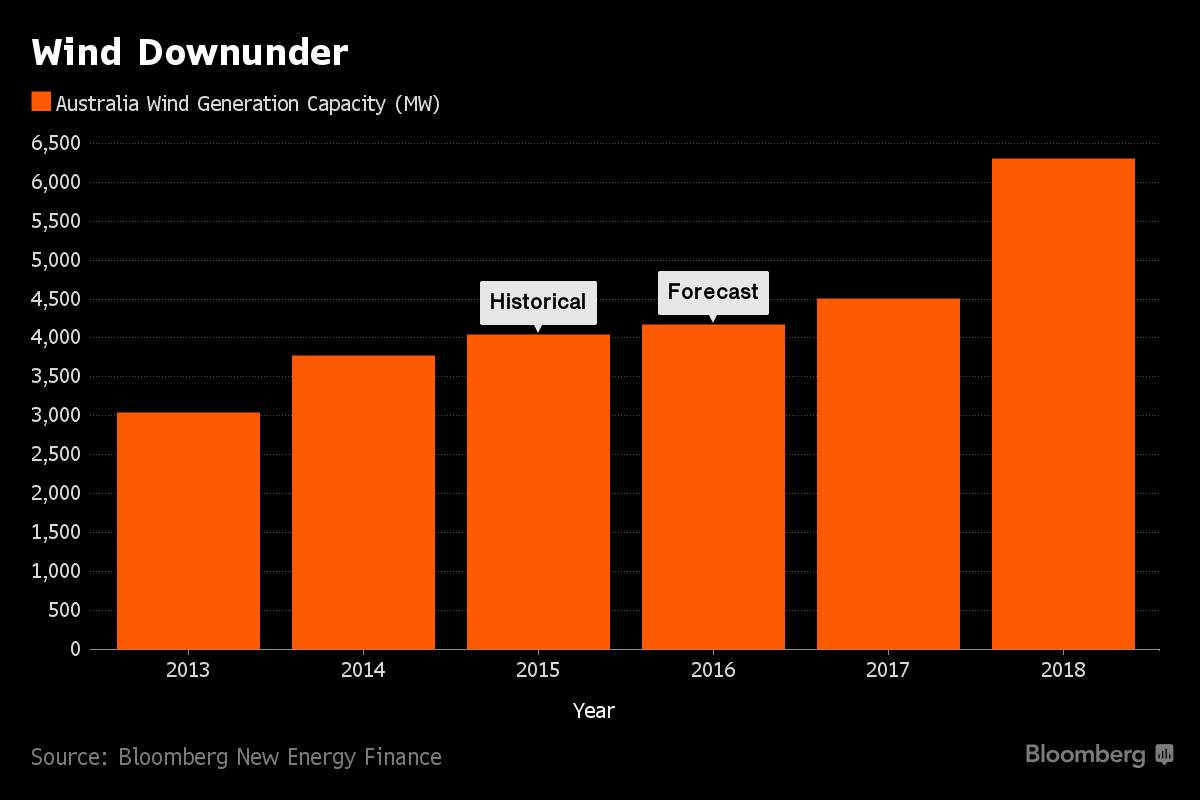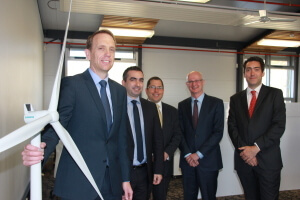News Release from windfair.net
Wind Industry Profile of
Australia awakens from its slumber
Australia has long been considered the last dinosaur of the fossil fuel industry. In addition to Canada, the country relied heavily on its abundant raw materials and turned its back on the market for renewable energy. Until recently. While in recent years at least some solar projects were set in motion, no movement took place on the wind energy market. But that was not due to the lack of wind. Above all the government of Ex-Prime Minister Tony Abbott was to blame. Abbott was an avowed opponent of wind energy, he described the turbines as "ugly" and provided for an investment freeze.
Since 2015, the country is ruled by Prime Minister Malcolm Turnbull, who sought subsequently to revise the errors of his predecessors. After signing the climate treaty of Paris, the Ministry of Environment has stated that in the future money from the 7.2 billion US dollar government Clean Energy Finance Fund may be invested in wind energy again. At the same time Australia wants to develop offshore wind farms. But until the program will come to running and first successes will be reported, it might still take some time though.
Meanwhile, the federal states took the stage with own investments and campaigns. Much like in the United States, some territories in Australia have recognized that renewable energy is not only good for the environment but also for the wallet and invested heavily in expanding their renewable portfolio.
The state of South Australia reported only now that last weekend and on Monday more than two thirds of its energy consumption were met by wind power: In all 83% of the electricity was generated by wind energy on Monday afternoon as reported by Bloomberg. In South Australia 683 turbines generate wind energy at the moment - and the numbers are rising.

Image: Bloomberg New Energy Finance
Last Thursday, another wind farm was officially switched on: The Hornsdale 1 project currently has a capacity of 100 MW and will be expanded in a further stage to 270 MW. The project was initiated by the French developer Neoen together with Siemens supplying the turbines.
 Neoen CEO Xavier Barbaro is convinced of Australia as a future market, as he emphasizes for Echo: “Hornsdale is a great example of the global strength of France and Germany working together to provide clean energy for 70,000 Australian homes and new employment, training and investment opportunities in South Australia and the ACT. With almost 40% of the country’s clean energy produced by wind farms, Australia’s renewable energy footprint is increasing in size and global relevance – making it a great place to invest and do business.“
Neoen CEO Xavier Barbaro is convinced of Australia as a future market, as he emphasizes for Echo: “Hornsdale is a great example of the global strength of France and Germany working together to provide clean energy for 70,000 Australian homes and new employment, training and investment opportunities in South Australia and the ACT. With almost 40% of the country’s clean energy produced by wind farms, Australia’s renewable energy footprint is increasing in size and global relevance – making it a great place to invest and do business.“
The local population is quite excited by the possibilities, because the economic recovery is felt locally. New hotels and restaurants have opened, small retailers settled. Even local farmers benefit by the regular income of the lease. The newly built infrastructure is used, for example, by the local fire departments as new access roads. The indigenous population is also involved in the project. Soon one of the towers will be painted with indigenous art which should provide even more attention.
The local community benefits at all levels of the wind farm. Colin Byles, CEO of the Northern Area Council explains another advantage at CSO: “The small organisations do not qualify for the major grants offered by the government and the funding from the Hornsdale wind farm provides them with the opportunity to undertake projects that they would never been able to commence.”
Other places in Australia are also showing that local communities are much more advanced than the federal government. On Kangaroo Island - third largest island in the country mainly living from tourism - the local government currently works on a plan to convert all energy consumption to 100% renewables. They are searching for a fitting concept to include wind, water, solar and biomass with appropriate modern energy storage facilities. They are even thinking about cutting the cable to the mainland – which priovides their energy at the moment. “100% renewables is a very real, very clear target ... Technology is not the issue. We have got solar, wind, wave, tidal, biomass. There is nothing we can’t really do.” explains Andrew Boardman, chief executive of the Kangaroo Island council, tells the Guardian.
Other federal states are also working on the implementation of ambitious targets in Australia. It is therefore likely to be only a matter of time before the fifth continent fully gets into the focus of the renewable industry.
- Source:
- Windfair
- Author:
- Katrin Radtke
- Email:
- kr@windmesse.de
- Keywords:
- Australia








